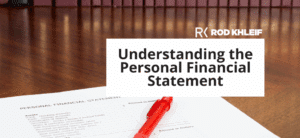Negotiation is the cornerstone of success in the multifamily real estate industry. It’s a skill that can make or break your investments, and mastering it is crucial.
This comprehensive guide will explore the intricate world of negotiation within the multifamily real estate sector, focusing on key components that set the stage for success.
The Foundation of Negotiation
In the multifamily real estate world, markets are dynamic and ever-changing. Economic trends, demographics, and various factors influence market conditions. Understanding these market dynamics is crucial for successful negotiation.
Multifamily properties have a unique place in the real estate market. They offer advantages and characteristics that make them a popular choice among investors. Understanding the role of multifamily properties is essential before you embark on negotiation journeys.
Pre-negotiation
The pre-negotiation phase, often overlooked, is where successful negotiations truly begin. It involves due diligence, gathering information, and assessing key factors before negotiations.
Effective due diligence starts with researching the property thoroughly. This step equips you with the knowledge to spot opportunities and pitfalls.
Assessing the seller’s motivation is another critical aspect of due diligence. Understanding why a seller is parting with their property can provide a significant advantage in negotiation.
Furthermore, you need to identify your negotiation goals. Every negotiation requires a roadmap, and defining your objectives is the first step towards a successful negotiation.
Leveraging Market Conditions
Understanding market conditions guides your decisions and helps you navigate the ever-changing landscape. Here are 4 key considerations for your next negotiation.
1. Recognizing Market Cycles
Multifamily real estate operates in cycles. Sometimes, it’s a buyer’s market, where properties are abundant and prices are competitive. Other times, it’s a seller’s market, with limited inventory and higher prices. Recognizing which cycle you’re in can significantly impact your negotiation strategy.
2. Navigating Economic Conditions
Economic factors play a pivotal role in market cycles. Be attuned to economic indicators like interest rates, job growth, and local economic health. These factors can signal shifts in market conditions, allowing you to adjust your negotiation approach accordingly.
3. Negotiating in a Competitive Market
In a competitive market, you need to make your offers stand out. Consider offering favorable terms, quick closings, or even sweetening the deal with concessions. Building strong relationships with sellers and their agents can also give you an edge.
4. Crafting a Competitive Offer
Your offer should reflect your understanding of the market. Price isn’t the only consideration. Offering flexibility on contingencies, proof of funds, and demonstrating your commitment can make your offer more attractive to sellers.
The Art of Effective Communication
Effective communication is the secret sauce in successful multifamily real estate negotiation. It’s not just about what you say; it’s about how you say it and how well you listen.
-
The Importance of Trust: Trust is the cornerstone of any negotiation. Building trust with sellers involves transparency, honesty, and reliability. Show that you’re a serious and credible buyer.
-
Active Listening: Listening is an underrated skill in negotiation. Pay close attention to the seller’s words, and ask clarifying questions. This helps you understand their needs better and shows that you value their perspective.
-
Creating Win-Win Situations: Negotiation in multifamily real estate isn’t a zero-sum game where one side wins and the other loses. Instead, the goal is to create win-win situations where both parties walk away satisfied.
Let’s now look at some of the most common negotiation styles and approaches you and the other party can use in the negotiation process.
Collaborative Negotiation
This approach focuses on cooperation and problem-solving. It’s about finding common ground and working together to meet both parties’ needs. Collaborative negotiation often leads to long-lasting relationships and positive outcomes.
Competitive Negotiation
Each party aims to maximize their gains in competitive negotiation. While it can be more adversarial, it’s a valid approach when market conditions are highly competitive. However, it’s crucial to strike a balance between assertiveness and collaboration.
Compromising vs. Problem-Solving
Sometimes, compromise is necessary to reach a deal. However, aim for a compromise that addresses both parties’ core interests. On the other hand, problem-solving seeks innovative solutions that satisfy both sides without significant concessions.
Negotiating Real Estate Commission and Fees
Working with realtors and managing transaction costs is essential to multifamily real estate negotiation.
Real estate agents typically earn a commission on selling a property. While they’re customary, negotiating realtor fees is always an option. Don’t hesitate to discuss commission rates with your agent to ensure a fair arrangement.
Choosing the right realtor is crucial. Look for someone with experience in multifamily properties and a track record of successful negotiations. Hiring a skilled realtor can be a valuable asset in your investment journey.
Strategies for Reducing Transaction Costs
Real estate transactions come with various expenses. Scrutinize these costs and look for opportunities to reduce them. For example, consider bulk purchases for supplies or negotiate favorable terms with service providers.
Effective negotiation in multifamily real estate extends beyond the purchase price. It encompasses deal structuring, building rapport, and optimizing transaction costs. As you continue, remember that negotiation is an art and a skill that can be honed with practice.
Overcoming Common Negotiation Challenges
Navigating multifamily real estate negotiations isn’t always smooth sailing. Challenges can arise, and it’s essential to be prepared.
One significant challenge is handling seller resistance. Sellers may have concerns or objections that can stall negotiations. It’s crucial to listen actively to their points of view and address their worries professionally.
Offering solutions or compromises can help ease their resistance. Sometimes, there’s a significant gap between your offer and the seller’s expectations. To bridge this gap, consider providing data and market insights to support your offer. Demonstrating the rationale behind your proposal can make it more appealing.
Another critical aspect of negotiations is dealing with repairs and concessions. After conducting due diligence, you might identify necessary repairs or improvements. When negotiating these issues, be specific and transparent. Provide estimates and evidence to support your requests, and be willing to collaborate on finding cost-effective solutions. Clearly outline your expectations for repairs or credits in the purchase agreement. Ensure that timelines for addressing these issues are well-defined. Collaborative problem-solving can lead to smoother negotiations in this regard.
Closing the Deal
The final stages of negotiation involve formalizing the agreement and preparing for the property transfer. Understanding the key steps in closing the deal is essential for a successful transaction.
In the final stages of negotiation, you’ll draft the purchase agreement. This legally binding document outlines the terms and conditions of the sale. It should include all negotiated aspects, such as price, contingencies, and timelines. Work closely with legal experts to ensure a comprehensive and well-drafted agreement.
You’ll navigate the closing process once the purchase agreement is in place. This involves various administrative and legal procedures, including title searches, property inspections, and financial settlements.
As you close the deal and become a multifamily property owner, take a moment to celebrate your success. Negotiating property price and closing a multifamily real estate deal is a significant achievement. Reflect on the journey and the lessons you’ve learned along the way.
Use this experience as a stepping stone for future investments in the dynamic and ever-evolving field of multifamily real estate. Continuously educate yourself, network with industry professionals, and set new goals for your real estate portfolio.
Conclusion
Effective negotiation is a cornerstone of success in multifamily real estate investing. Throughout this guide, we’ve explored the key components of negotiation, from due diligence and market conditions to building rapport and problem-solving. You’ve gained insights into negotiating commissions, overcoming challenges, and closing deals.
As you embark on your multifamily real estate journey, remember that negotiation is not just a transactional skill. It’s an art form that can be refined over time. So, embrace each negotiation as an opportunity to learn and grow, and always strive for win-win outcomes.
Your ability to negotiate house price effectively will continue to be valuable. Keep honing your negotiation skills, stay adaptable, and remain committed to your investment goals. You can thrive in this exciting and rewarding industry with dedication and the right strategies.
If you want to learn more, check out my multifamily investing courses and learn the insights that took me decades to uncover, including negotiation tips and strategies that I’ve never shared anywhere else. With these resources, you’ll be able to avoid many failures along the way that many investors had to endure, building your dream portfolio much faster.












